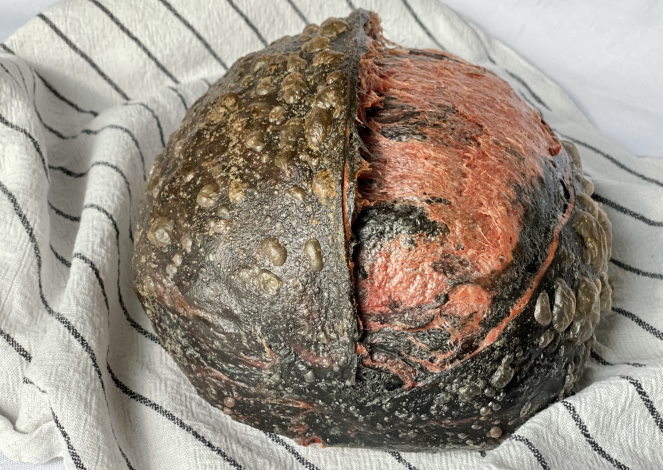
MARBLED in red and black, this duo-toned sourdough boule is not just eye-pleasing but delicious when slathered with premium butter. The melding of two separate doughs through a simple process called lamination creates an attractive marbled effect in the crumb. Bake and present this boule as a gift to loved ones and friends for any occasion.
Total Time: 2 days including overnight proofing in the fridge
Difficulty: 3/5
Cost: S$5.00
Yields: 700g boule
A: Charcoal Dough
150g Japanese strong bread flour, 13% protein
113g water
3g charcoal powder*
30g starter
3g salt
B: Red Yeast Dough
150g Japanese strong bread flour, 13% protein
113g water
3g red yeast rice
30g starter
3g salt
DIRECTIONS:
1. Charcoal dough: Combine all ingredients except starter and dough. Mix it until there’s no visible bits of dry flour. Autolyse 1 hour at room temperature.
Autolysis in sourdough baking is the process where flour and water are mixed together and left to stand at room temperature – this is to ensure that the flour is hydrated.
2. Red yeast dough: Do the same as charcoal dough.
3. Add starter to each dough. Mix until it is fully incorporated. Cover and rest both doughs for 30 minutes.
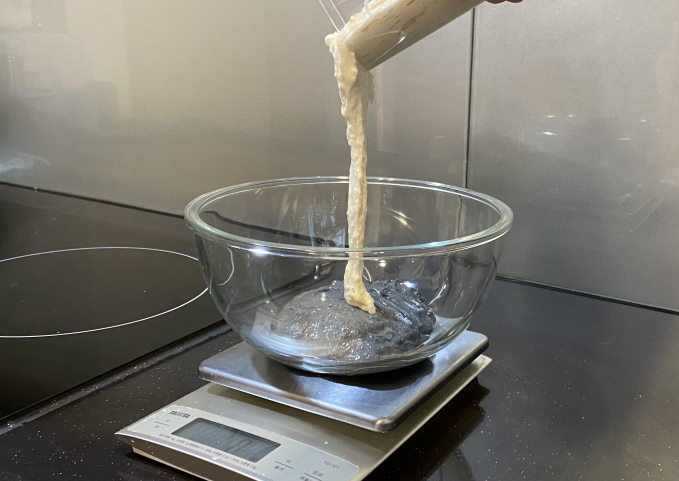
4. Mix salt into each dough, making sure it is well distributed. Cover and rest for 30 minutes.
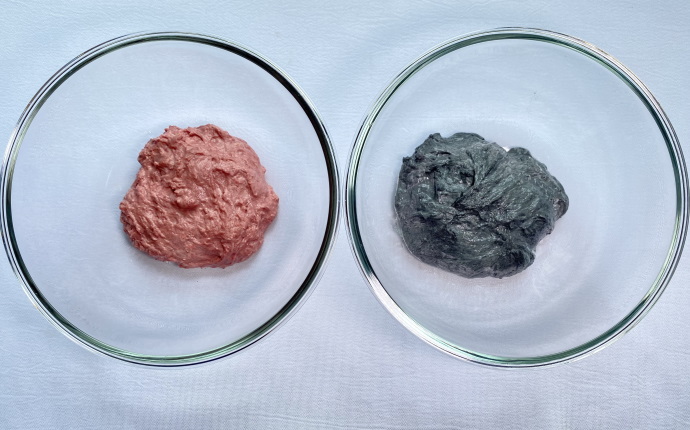
5. After 30 minutes, perform 2 sets of stretch and folds at 30 minute-intervals. This allows gluten in both the red and black dough to relax in between each stretch and fold.
6. Laminate both doughs: On kitchen counter, gently stretch charcoal dough into a rough rectangular. Do the same with red yeast dough and then lay it on top of the charcoal.
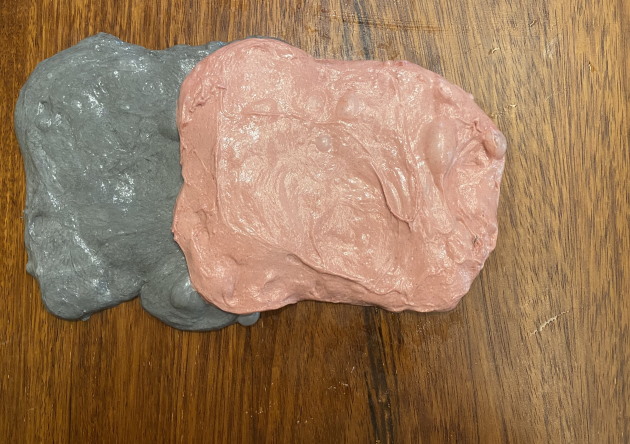
Gently fold it up and transfer it to a glass bowl.
7. Perform 1 set of coil fold. Each set has 4 folds. With both hands, lift dough up in the middle. This stretches the dough as it is being lifted. Gently lower it back into the bowl, allowing it to fold onto itself. Do the first fold, give bowl a quarter turn and repeat 3 more times — until a full set is completed.
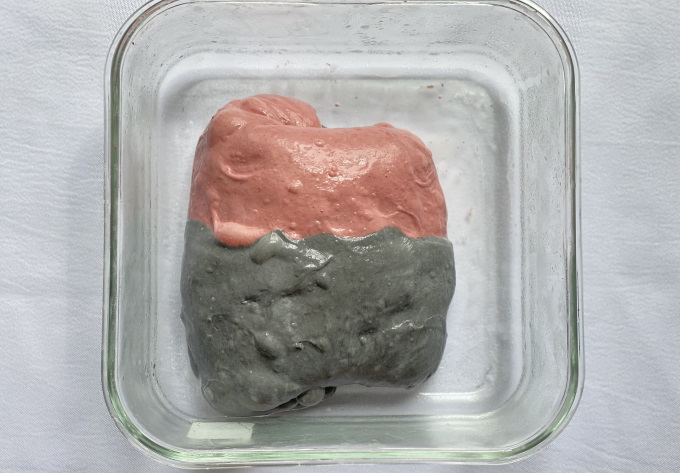
8. Shape dough. Place it in to a 25cm banneton for 15-20 minutes.
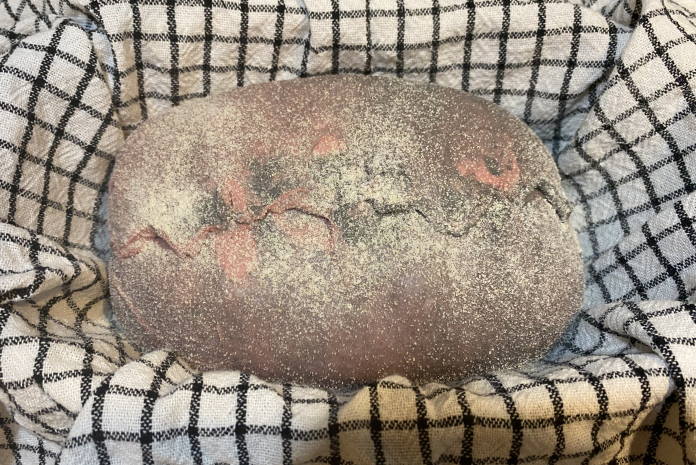
9. Place it into a large ziploc bag. Seal bag, transfer it to the fridge for 8-12 hours. This process where bread dough goes through a 2nd proofing period in the fridge is referred to as cold retard.
Cold retarding is a baking term that refers to second proofing or rising in the refrigerator. This slow fermentation process, usually done overnight, allows the bread to develop flavour. The bread is then baked the next day.
10. The next day, preheat oven 250°C together with a baking vessel for 30-45 minutes. Picture below shows a Dutch oven which is best suited for sourdough bread baking. Alternatively, use a claypot, roasting pan or stainless steel pot with its respective lid.
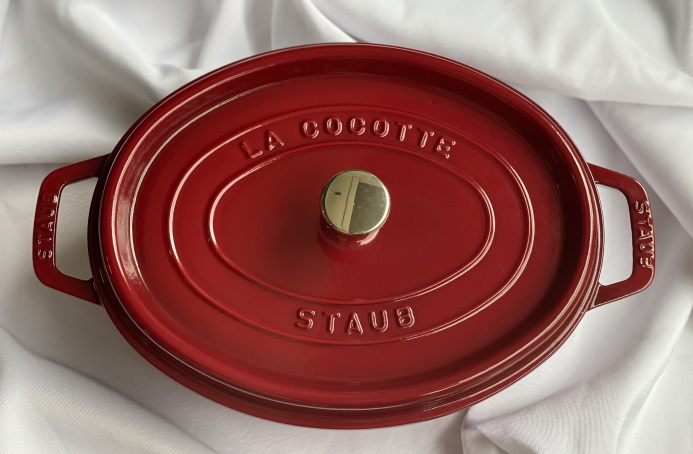
11. Using a lame (a razor blade fitted to a handle) or naked razor blade, score dough according to your artistic leaning. Fill a spray bottle with water. Spritz dough all over with water.
12. Putting on oven mittens, exercise extreme caution. Remove baking vessel onto heat resistant kitchen counter. Gently and carefully, holding onto baking paper, lower dough into vessel. Put cover back on. Bake 20 minutes.
13. Remove cover of baking vessel. Reduce heat to 200°C. Continue baking for another 20-30 minutes until crust is golden brown.
14. Allow boule to cool down completely, approximately 2 hours. Do not be tempted to slice it yet – the crumb will be gummy as the moisture needs to fully evaporate while cooling down. Using a sharp bread knife, cut it open to check crumb texture. The interplay of red and charcoal in the dough yields a photogenic marbling.
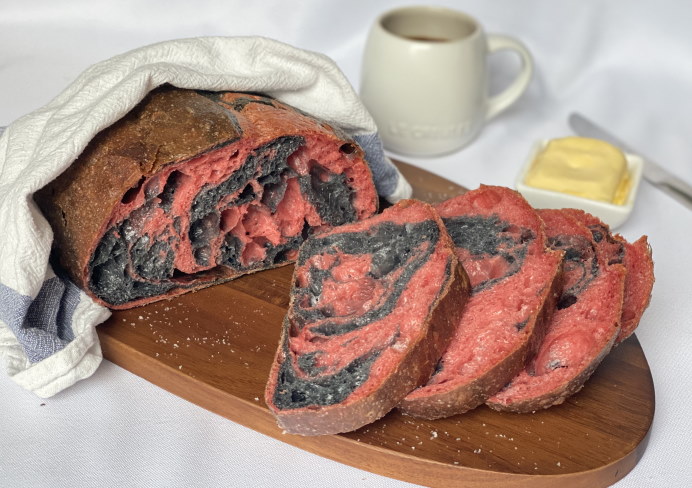
Using a bread knife, slice boule and enjoy it with butter.
BUYING TIP: *Charcoal powder (right bowl, below) is available at baking supply food store, whereas red yeast powder (left bold, below) is sold in Chinese medical shops.
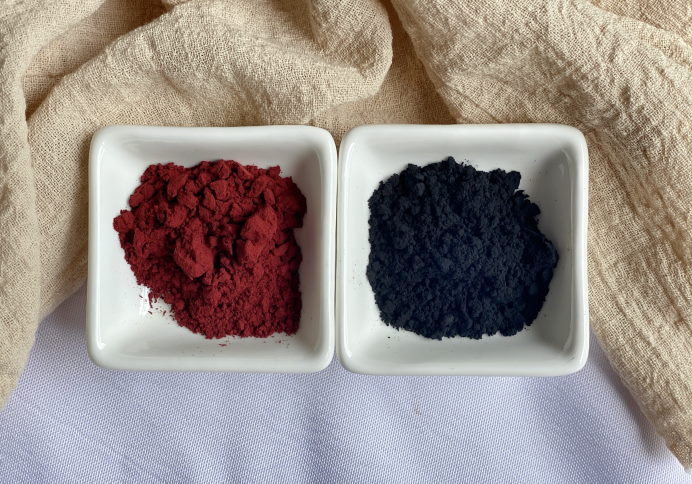
TECHNIQUE: Scoring is making an incision on the surface of the dough with the aid of a razor blade or a super sharp knife. Score at an angle, as if you’re filleting a fish. It creates an opening to direct steam formed during baking to escape, allowing the dough to expand without bursting the skin.
When mixing the dough, expect variations in absorption of water as the texture of flour varies from country to country depending on where it is milled. Start by adding 3/4 of the water; mix well, adding more water if required, until a ball of dough forms.
Starter: For time efficiency, join an online sourdough group in your neighborhood and you can easily request for a portion from group members. Treat this as your mother starter and store it in a clean jar in the refrigerator. To bake bread or other recipes using sourdough yeast, draw from this jar. For this recipe, place 30g starter in a new and medium jar. Feeding ratio is 1:1:1 (1 part starter @30g, 1 part water @30g and 1 part bread flour @30g). Using a pair of chopsticks or a long spoon, stir until well combined. Allow 4-6 hours for yeast to double before using — measure out two separate portions of 30g for this recipe. Put remaining starter in discard jar. It can be used to bake a whole range of cookies and cakes.
Photos: Tia Yun Yun
Click on STORM-Asia/food for more recipes and reviews of restaurants.
If you have a simple recipe to share, please email it whipitup@storm.sg.
You may like to try these recipes:





















